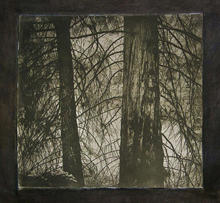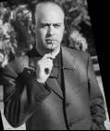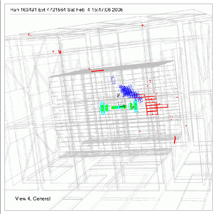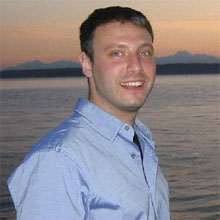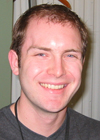 | Thursday, April 27, 2006 |
|
Thursday, April 27 2:30 p.m. Theoretical Physics Seminar - Curia II Speaker: J. Zupan, Carnegie Mellon University/Stefan Institute, Ljubljana Title: Charmless 2-Body B Decays in SCET 3:30 p.m. DIRECTOR'S COFFEE BREAK - 2nd Flr X-Over 4:00 p.m. Accelerator Physics and Technology Seminar - Curia II Speaker: V. Ranjbar, Fermilab Title: Chromaticity and Impedance Effect on the Transverse Motion of Longitudinal Bunch Slices in the Tevatron
Friday, April 28 For links to events, click here. |
|
Extended Forecast |
Secon Level 3 |
|
Thursday, April 27 -Santa Fe Black Bean -Sloppy Joe -Stuffed Peppers -Sauteed Liver & Onions -Baked Ham & Swiss on a Ciabatta Roll -California Pizza -Crispy Fried Chicken Ranch Salad |
|
Thursday, April 27 Dinner -Spring Rolls -Lemon Grass Beef -Jasmine Rice -Salad of Bean Sprouts, Cucumber & Carrots -Mango Flan
Wednesday, May 3
Chez Leon Menu |
| Fermilab Today is online at: http://www.fnal.gov/today/ Send comments and suggestions to today@fnal.gov Fermilab Today archive Hurricane Relief Page Fermilab Today PDF Version Fermilab Result of the Week archive Fermilab Safety Tip of the Week archive Linear Collider News archive Fermilab Today classifieds Subscribe/Unsubscribe to |
| I Solisti della Scala Trio: May 5 in the Ramsey Auditorium | ||
Don't miss the concert The Washington Post described as "an evening of breathtaking artistry." Friday, May 5, the Cultural
The concert will be in the Ramsey Auditorium at 8:00 p.m. and tickets are $20. For more information or telephone reservations, call 630/840-ARTS (2787) weekdays between 9 a.m. and 4 p.m. |
|
New York Times, April 27, 2006: Physics in America at Crossroads and in Crisis, Panel Says Physics in America is at a crossroads and in crisis, just as humanity stands on the verge of great discoveries about the nature of matter and the universe, a panel from the National Academy of Sciences said yesterday.
The United States should be prepared to spend up to half a billion dollars in the next five years to ensure that a giant particle accelerator now being designed by a worldwide consortium of scientists can be built on American soil, the panel said. If that does not happen, particle physics, the quest for the fundamental forces and constituents of nature, will wither in this country, it said.
|
|
Nature, April 27, 2006: Making collider endorsement count: There is broad backing for a US bid to build the International Linear Collider.
A multidisciplinary panel of senior scientists last week endorsed strong US participation in the construction of the International Linear Collider (ILC), the accelerator project that particle physicists see as their top priority. In a report from the National Academy of Sciences (see page 1094), the panel called on the US government to bid to host the ILC.
|
|
Chicago Tribune, April 27, 2006: Panel pushes particle machine: Accelerator report leans to Fermilab In a big boost for Fermilab, a prestigious expert panel on Wednesday recommended that the federal government commit to building a multibillion-dollar particle accelerator on U.S. soil. With Fermilab emerging as this country's only national lab specializing in particle physics, that would make Illinois the facility's natural site, the report suggests. This would bolster the state's aspirations as a technology powerhouse, lift the local economy and resolve the question of Fermilab's future.
At present the Tevatron located at Fermilab, near Batavia, is the world's most powerful particle accelerator. Scientists use the machine to create streams of subatomic particles that collide with each other at super-high energies to study fundamental questions of the forces that created the universe.
|
| How to catch a gluino | |||
| |||
|
Most new particles that physicists are looking for at the Tevatron
are expected to decay almost immediately after they're created.
Searches are typically designed to look for signatures from these
fleeting parents. But what if the new particle lives much longer?
Some recent theories, such as "Split Supersymmetry", actually
predict the "gluino" to live many seconds, or even hours, before it
decays.
A recent calculation by a group at Stanford University predicted that some of these long-lived gluinos could even get stuck in the dense material that makes up experiments like DZero. When these particles finally decayed, they would create sudden bursts of energy...apparently coming from within the detector itself! DZero had never planned to search for these random bursts of energy. But recently they have gone back through their data, looking for any events that look like the decay of a stopped gluino. Interestingly, there is another way that energy can appear to come from within the detector itself. A high-energy cosmic muon, coming from outer-space, can travel through the detector and then suddenly deposit a large fraction of its energy into the detector. Normally, cosmic rays leave signals in the DZero muon detection system. However, very occasionally the cosmic ray evades detection and then it looks like the energy came out of nowhere. Unfortunately, the number of "energy bursts" seen in the DZero data matches well with the number expected from cosmic rays. So, there's no sign that DZero is catching gluinos, yet. But an exciting new way to look for new particles has been pioneered. | |||
| |||
| Result of the Week Archive
|
Certifying Software for the Grid, with the Grid
| |
|
You've just written your first application for the grid, and it compiles and runs perfectly on your laptop. Now you want to test it on the wide world of the gridóbut how? You don't have the resources to build a test grid with all the diversity of the real grid, but you don't want to put your application into production just to find out where it will fail.
Read More |
|
International Folk Dancing International Folk Dancing will meet Thursday, April 27, at Kuhn Barn on the Fermilab site. Dancing begins at 7:30 p.m. with teaching and children's dances earlier in the evening and request dancing later on. Newcomers are welcome and you do not need to come with a partner. Info at 630-584-0825 or 630-840-8194 or folkdance@fnal.gov.
English country dancing
|
